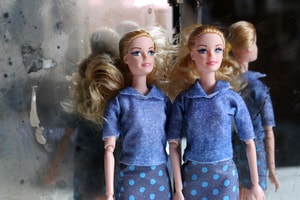Should it Stay, or Should it Go?
Professional Fiduciaries are first responders. They are often first to advocate for the welfare and well-being of a new client, and, more often than not, first to step foot in the door of a home overrun with benign neglect, or, basically intact but filled with a huge number of things.
Responsible for the health, welfare, and fiscal oversight of their clients, Fiduciaries are called upon to make some hard decisions. Sometimes this means finding room for caregivers or divesting a home filled with a trove of old and new treasures.
Your client lives here

Home is where the heart is. It is also the place of deferred dreams and incomplete projects. It is the place where folks stash their bowling trophies, grandma’s plated silver, and signed first editions. Over years the home becomes the repository for everything life has to offer – clothes, kitchenware, and place-settings. The “average” household often contains the possessions of adult children who had long ago moved from the family home but never quite got around to removing yearbooks and toys, high school ephemera, and everything else assigned to the category of “memories.” Don’t forget the so-called “collectibles” – from Hummels and Barbie dolls to entire runs of Playboy and National Geographic magazines.
Why do we own so much stuff? It’s a difficult question to answer. Older adults who lived through America’s “Great Depression” tell us that growing up with nothing means holding on to everything. While that may or may not be true, I wonder how we understand younger generations’ seemingly insatiable consumption, or how we account for the growth of self storage.
Fiduciaries will of course come across clients’ self-storage units. Dark and depressing, public storage facilities are frigid cold in the winter, overwhelmingly hot in the summer. With a multitude of enticements to bring in the customer, it takes a lot of time and planning to get out. If you’ve seen A&E’s Storage Wars you know that there’s no guarantee of hidden treasures behind the padlocked door.
Hold tight
We tend to cling to our things for two very broad reasons. First, we don’t want to let go of stuff we may need “someday” (note cards, car wax, vases), or that we may wear again “someday” (golf shirts, skinny jeans). Of course any and all items may have future use but if we’re not already in the habit of writing notes or losing weight, then these “someday” items do not have current value; they just clutter our lives today. At the same time, we hold on to things that have been in our lives forever such as Grandma’s good china, music boxes, report cards – contain therein our “memories,” along with the stories we attach to each and very item.
With a tight hold on that which we may need someday (the future), and an emotional hold on that which has already happened (the past), our “stuff” tends to hang around. The longer it hangs around, the value of the “stuff” either increases or decreases.
It’s tricky business determining the value of art and clothing, furniture, first editions, and the array of what is unearthed in clearing the path for what’s next in the life of the client or the life of a trust. And so I asked a pro.

What is it really worth?
Joe Baratta, the vice president of Business Development & Valuations with Abell Auction Co., is a USPAP-qualified generalist appraiser with over 15 years’ experience helping fiduciaries separate “the wheat from the chaff.” I caught up with Joe at his home in Los Angeles to talk about the value of “stuff” he comes across when he’s called in to appraise the contents of the Fiduciary clients’ home.
Everyone has “stuff,” some of which is brought home to serve an immediate need (a bed or a dresser) or purchased because of the item’s perceived “someday” value. “Beanie Babies” are a perfect example of this,” Joe surmised. The stuffed toys had a high market value at a particular time but many people held on to their “collection” believing that the value would soar the longer it remained in their possession which hasn’t been the case (although there are exceptions). True collectors follow the appropriate markets for their collections through trade shows and major auction houses. Still, anything that is mass produced will usually not hold its original value nor see an increase in value.
Joe offers compelling insights about what he sees daily. Fiduciaries may find this information helpful when faced with downsizing a client’s home:

Bottom line
People have hard time letting go of items, regardless of perceived or real value. The family members in possession of the “family jewels” are stewards to protect the family legacy. Joe reminds us, “We’re custodians of items and feel obligated to hold on to at least some of it because of our family connection.”
